Beautiful, vibrant, and surprisingly low-maintenance; these are all great ways to describe the ruby necklace succulent. This is a succulent with a history as rich as the red hue that this plant is famous for.
Let’s take a deep dive into this delightful succulent and learn about its background, how to care for it, and how to grow your own ruby necklace.
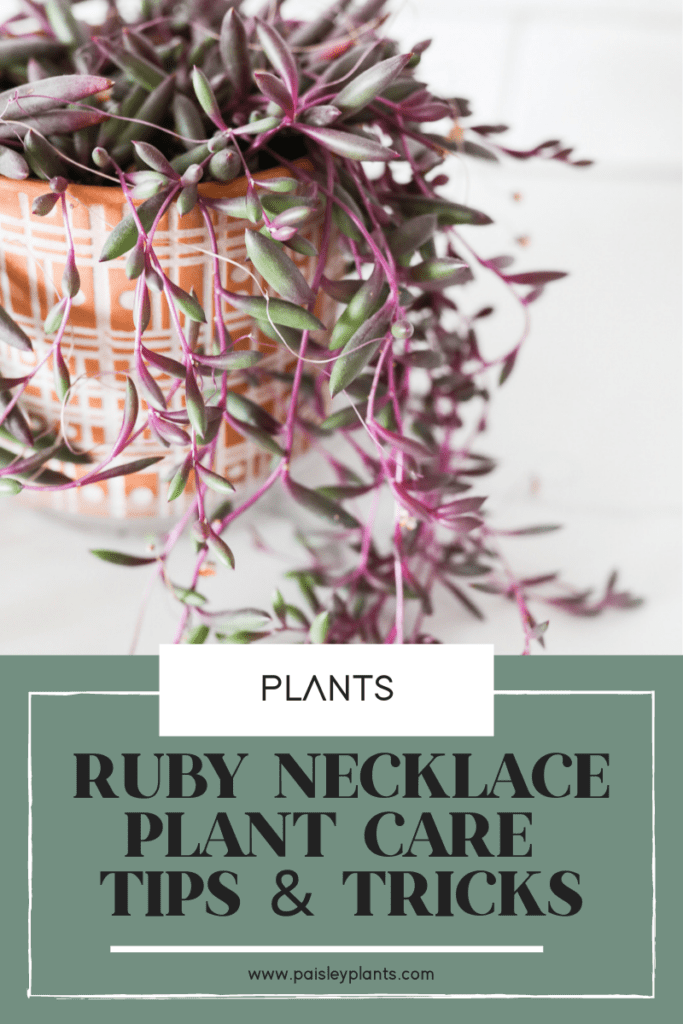
Table of Contents
Background Information
The Othonna capensis ‘ruby necklace’ is a trailing succulent native to South Africa. The ruby necklace succulent is known by a number of names including the string of rubies, the jewel among plants, and the string of pickles (when green, their torpedo-shaped leaves really do look like little pickles)!
As their name implies the ruby necklace succulent is famous for their bright ruby red color, which only appears when exposed to sunlight. They have small, skinny leaves which grow on a thin vine, which makes them quite literally look like a string of rubies!
The red color only appears when exposed to bright, direct sunlight for long periods of time. When grown in shade, their fleshy leaves revert back to green (which is also beautiful).
The ruby necklace succulent is a member of the Asteraceae family, which grows very beautiful daisy-like flowers. The flowers that the ruby necklace produces are a gorgeously vibrant yellow with a bloom time in the spring, summer, and fall; so expect to see them nearly all year round. The daisy-like blooms complement the succulent very well, both in its red or green form!
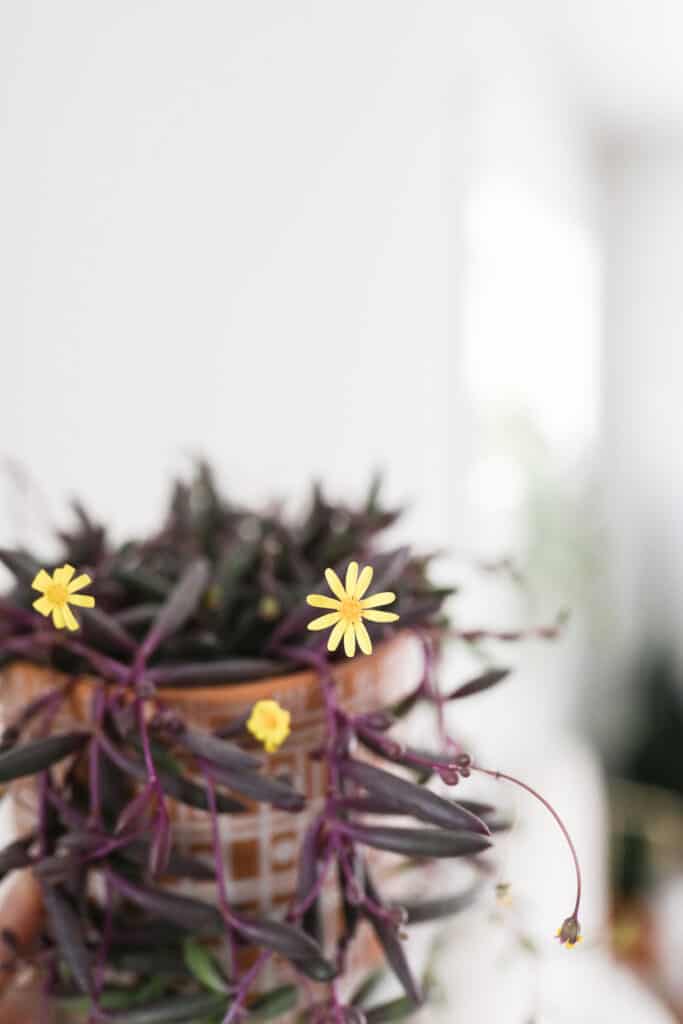
Indigenous tribes who lived in southern Africa held the string of ruby succulent in high regards. It was used as a medicinal plant and was also believed to have protective powers.
In addition, they were also used for food, jewelry making, and can be brewed into teas or wine. In fact, the flower produced by the string of rubies succulent is the national flower of Tanzania- so you can only imagine how popular they are in their native location!
The string of rubies did not reach Europe until the late 17th century where it arrived via a cargo ship… the rest is history and now we get to enjoy the company of the ruby necklace worldwide.
The string of rubies is a fantastic plant to grow indoors. They are very forgiving of most household temperature and humidity levels. In addition, they are non-toxic to both pets and humans. So you can feel good about having them in your home with curious children and pets nearby.
Ruby Necklace Care Tips
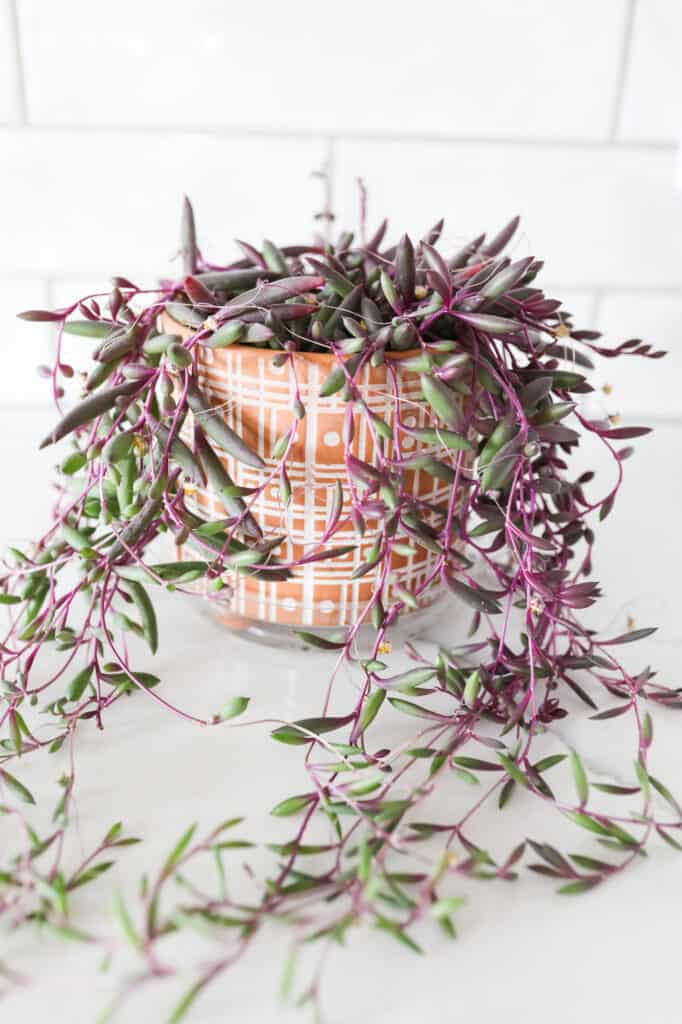
You might think caring for a string of rubies is difficult or intimidating due to its immense beauty, but this is quite the opposite! Growing a string of ruby succulent is very easy with the right knowledge. Let’s take a look at the ideal environment for caring for a ruby necklace succulent!
Sun & Light
The string of rubies’ beautiful vibrant colors are dependent on the sunlight; the more full sun, the redder your succulent will be! When growing your succulent indoors, make sure to give it as much direct sun exposure as possible.
Ideally, you should place your succulent on a windowsill that receives at least 6 hours of direct sunlight daily. In very hot months, you could give it more indirect light vs direct sun. A lack of sunlight causes the color to revert back to green.
If you don’t have a good spot that gets bright light, you may want to consider a grow light for it!
Soil Type
Just like most succulents, the ruby necklace succulent requires a well draining soil mix. Any pre-made potting mixes marketed towards cacti and succulents will do just fine.
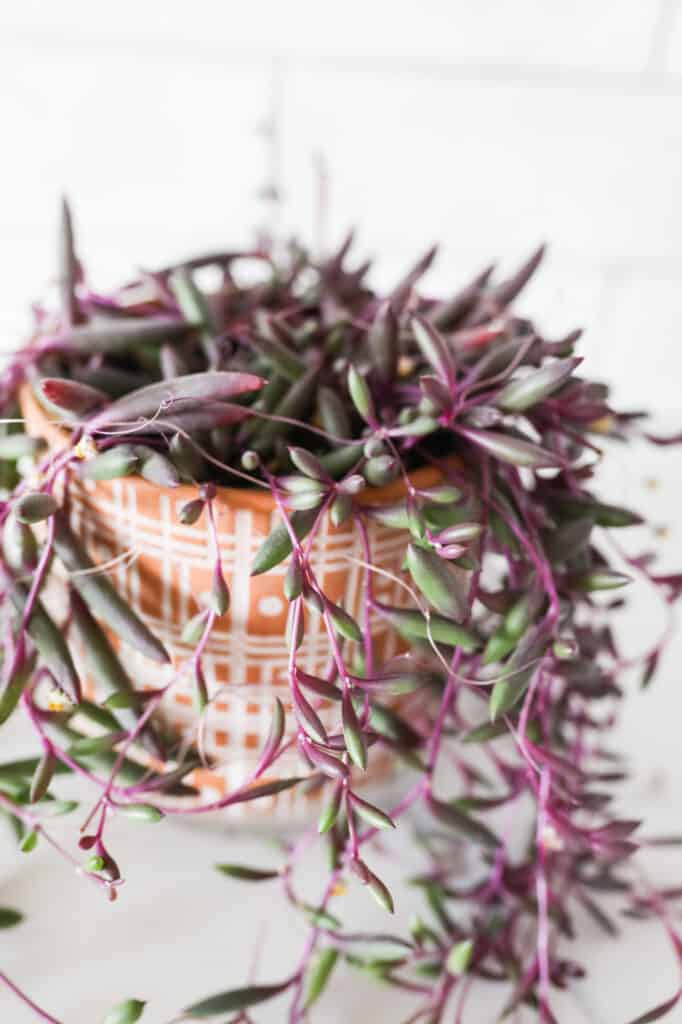
However, if you prefer to make your own potting mix, I would suggest mixing regular soil with perlite, sand, and pumice to make a well-draining potting mix. In addition, your soil should have an acidic pH level; around 6.0 to 6.5.
Water
The ruby necklace succulent prefers to live in droughty conditions. Allow the soil to dry out entirely between waterings. Give your succulent a deep watering; give the plant a slow steady stream of water and wait for the excess to drain out of the bottom of the pot.
Too much water is detrimental to ruby necklace plants but not enough water is also not great.
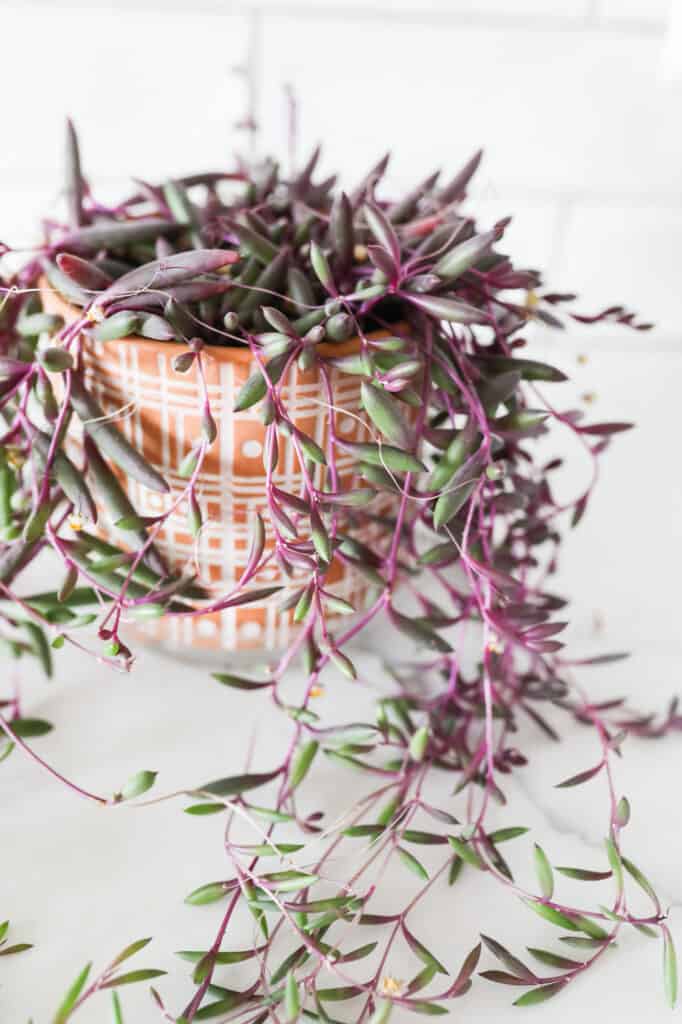
The best way (in my opinion) to ensure you’re not over watering is to do the finger test! Simply put your finger into the soil an inch or so to see if the soil is wet or dry. If it is dry soil, water it! If it’s wet soil, wait a bit long.
Fertilizer
The string of rubies is not a heavy feeder, and therefore does not require a fertilizer regiment to maintain its health. However, fertilization is optional to encourage new growth.
Fertilizer should only be applied twice during the spring and summer; select a fertilizer with low nitrogen content.
Temperature & Humidity
Like many succulents, the ruby necklace enjoys warm temperatures and dry conditions. It is tolerable of a typical household temperature and humidity level, but do not allow it to go below 50° F.
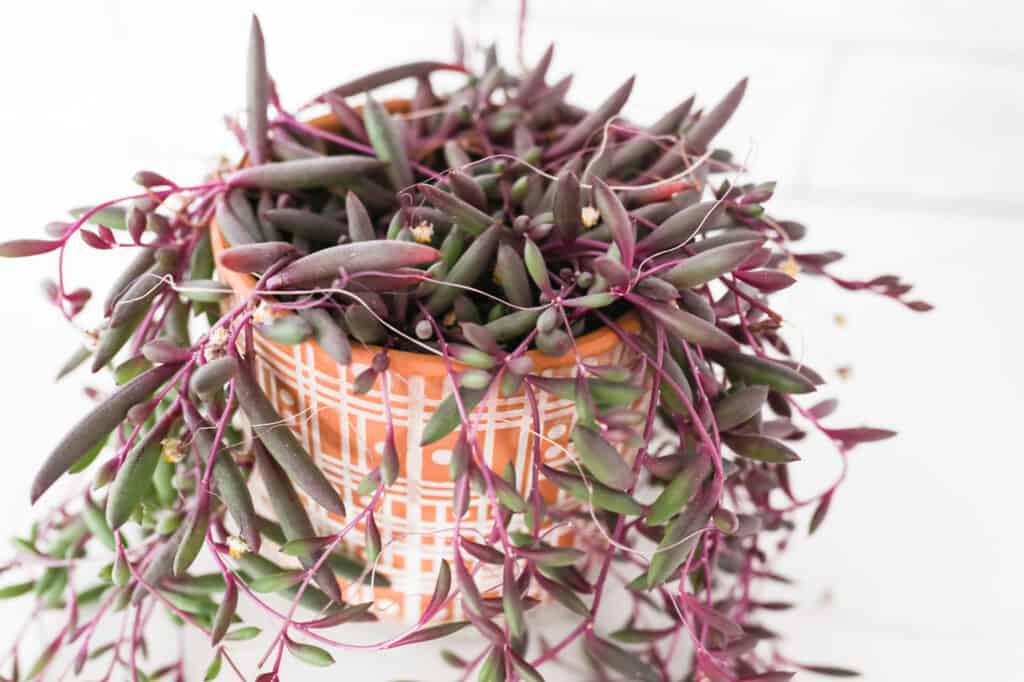
If you live in an area with extreme winter temperatures, please move it away from any drafty areas, as this could be detrimental to its health.
Potting & Repotting
One of the most important aspects about caring for a ruby necklace succulent is keeping your plant dry; choosing the right pot makes a world of difference in your succulent’s health.
Succulents require a pot with good drainage. Your pot should have at least one drainage hole at the bottom.
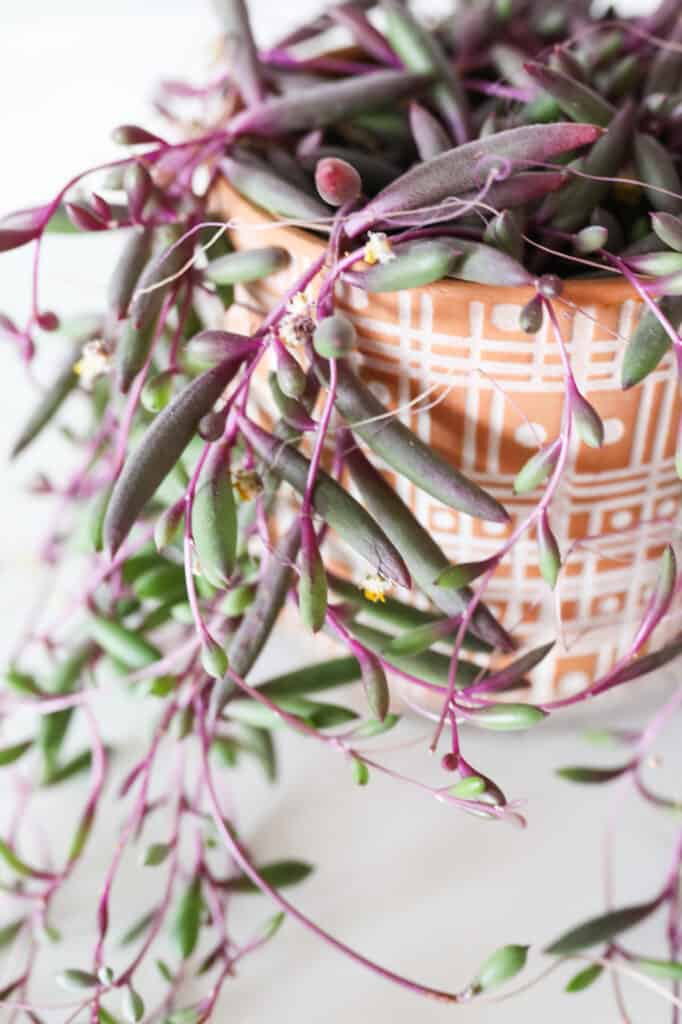
The material of your planter makes a difference as well. Materials such as terra cotta and unglazed ceramic are porous and absorb excess water that your succulent’s soil does not need.
These plants do not mind being root-bound, and therefore do not require frequent repotting. Repotting your string of rubies every 2 or 3 years will be sufficient.
Pests
Two common pests that target the string of rubies are mealybugs and scale. These two pests are “sap-suckers,” they latch onto your plant and suck the nutrients straight out of those fleshy leaves. Checking your plant on a regular basis will help you detect any pest infestation early.
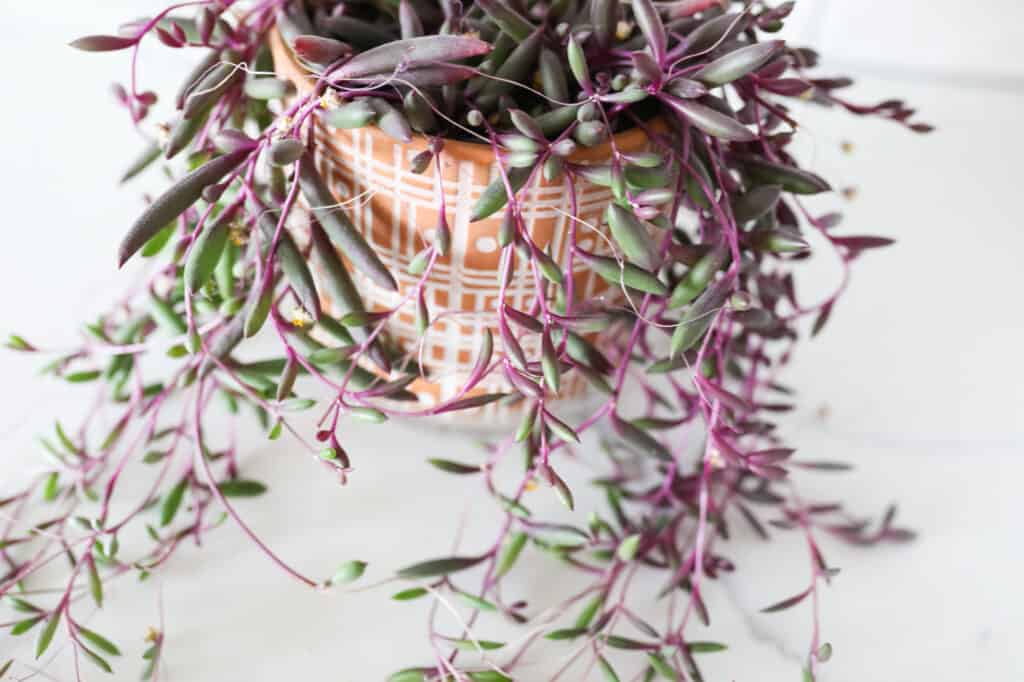
Luckily, mealybugs and scale are very treatable pests. If you notice an infestation on your string of rubies, you can treat your plants with isopropyl alcohol, neem oil, or insecticidal soap.
Diseases
Thankfully for owners of the ruby necklace succulent, these plants are not prone to many diseases that specifically target succulents. However, the greatest threat to your succulent is overwatering, which could lead to root rot.
Root rot is a disease that occurs when a plant’s soil has become waterlogged, causing the roots to break down and the plant to slowly die. This is an extremely preventable occurrence; as long as you maintain proper watering procedures, root rot will not get your succulent.
Always ensure that you are waiting until the soil is completely dry before watering your succulent; droughty conditions are a must when taking care of a ruby necklace.
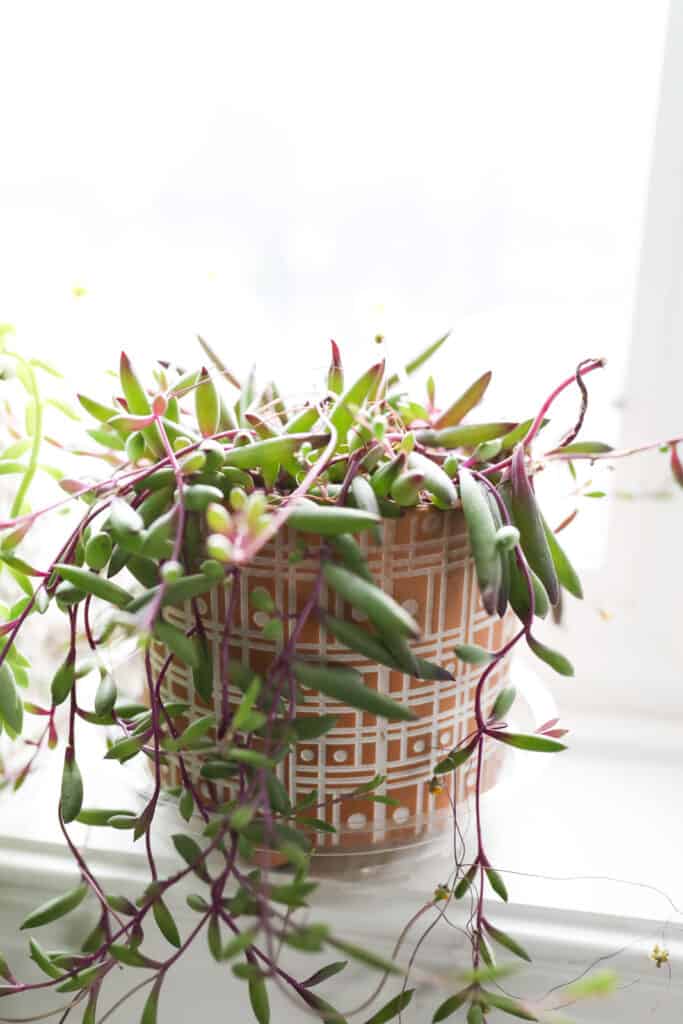
In addition, pay attention to the type of container your succulent is planted in; always choose something with extra drainage to make sure your soil is never soaked.
Propagating Ruby Necklace
The ruby necklace can easily be propagated via stem cuttings. It’s best to do during the growing season (or late spring and summer months) but you can also have success during the dormancy period (or winter months).
Propagating succulent cuttings is very simple and straightforward by following these steps:
- Use a pair of sharp, sterile scissors and slice off a piece of the stem from the main plant. This cutting should be healthy and contain at least 2 or 3 nodes.
- Fill a pot with succulent potting soil and place the cutting on top of the soil, but do not bury it.
- Keep the soil lightly moist, but not soaked in water.
- Continue keeping the soil moist until you notice new growth forming from the cutting. This could take at least 4 weeks to become noticeable.
You can also opt to propagate your cutting in water in a propagation station first before transferring it to soil. Simply place the cutting in water, making sure only the cut-end of the stem is submerged.
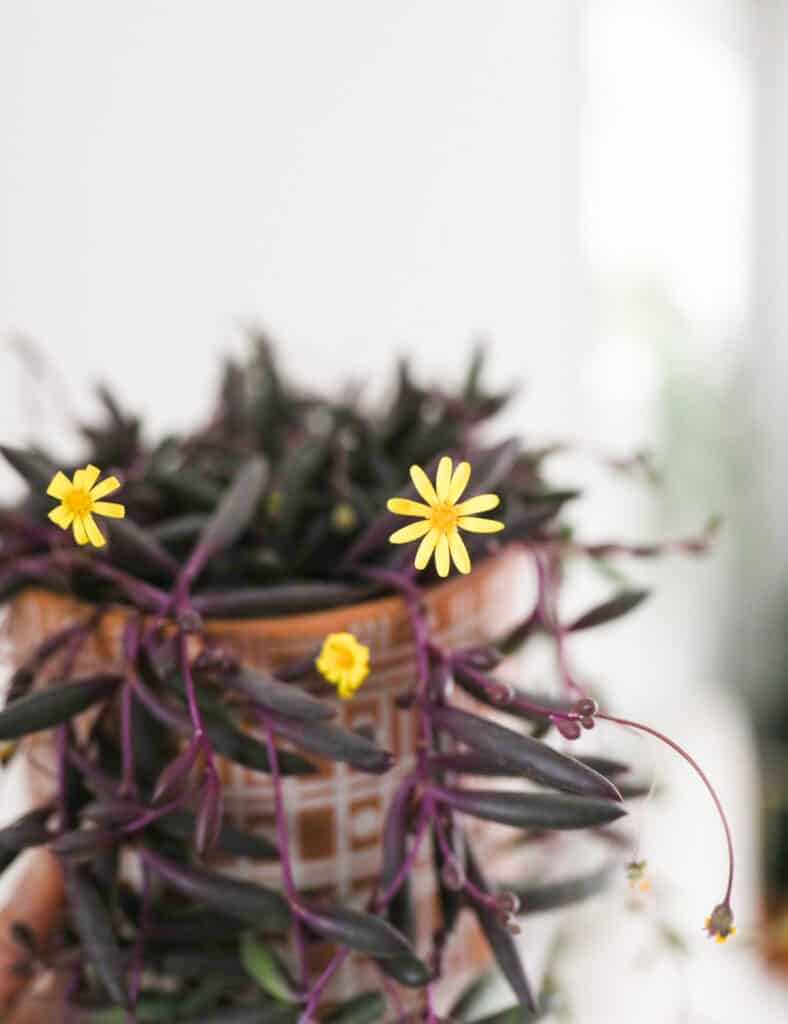
Every week, switch out the water in the cup; this will prevent the likelihood of your cutting becoming infected with bacteria. Monitor the cutting every week for root growth; it could take a month or so for this to happen.
When the roots are at least one inch in length, transfer the cutting to a container with succulent soil and maintain a lightly moist soil. Care for it as you would with a regular string of rubies.
Propagating succulents is surprisingly easy. Before you know it, you’ll have a surplus of string of rubies to give away to your friends and family!
Many nubile plant owners seem to shy away from exotic succulents, fearing they might be difficult to care for. I say, do not shy away from the othonna capensis ruby necklace succulent!
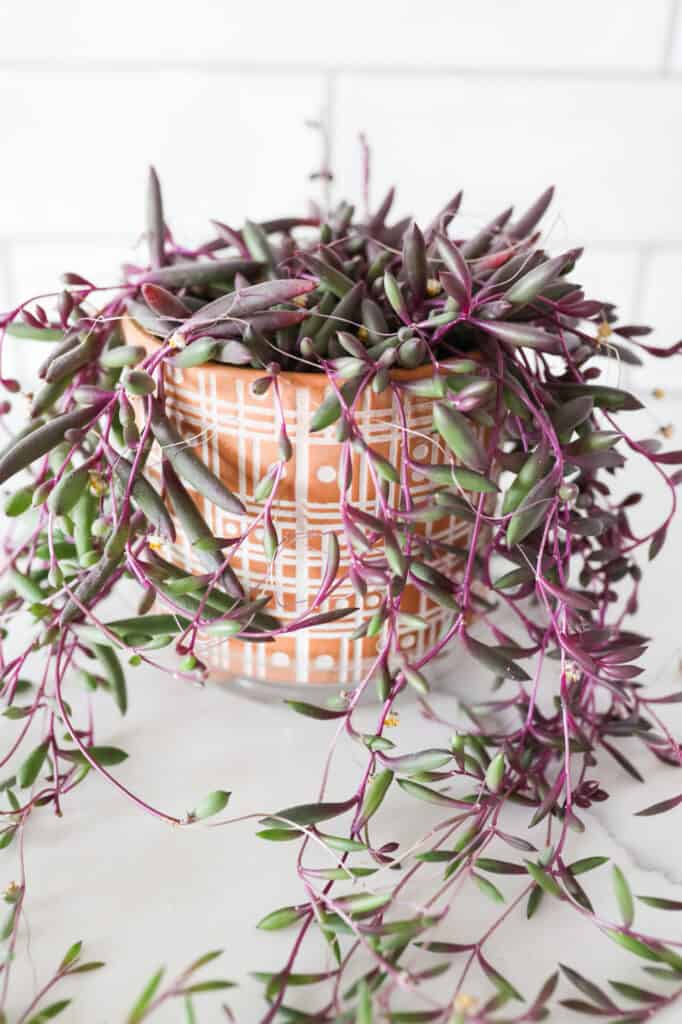
While it is beautiful beyond compare with its bright yellow flowers and mix of red and green foliage, it is by no means a difficult plant to care for. By following simple guidelines, you can give your trailing succulents a long, happy life.
I hope this guide has shed a little light on the ruby necklace succulent and will inspire you to consider adding this beauty to your plant collection.
Want to learn about more string succulents? Check out this post for tips on how to care and propagate your string of dolphins, how to care for your string of fishhooks and how to propagate a string of hearts!


Really good information. Thank you. I’ve had my Ruby Necklace for about a year now and decided to Google “care” to make sure I was doing right by it. It’s doing great, and its bloomed a couple of times, but I’m going to move it to my South window to see if I can increase the depth of color.